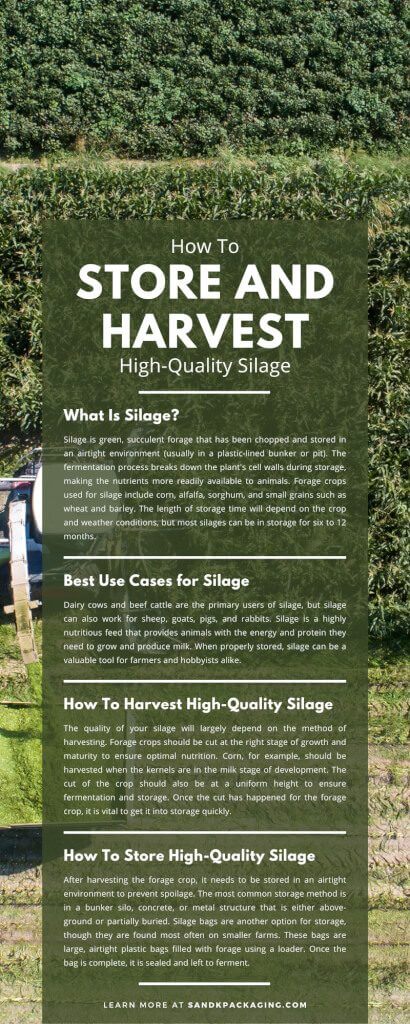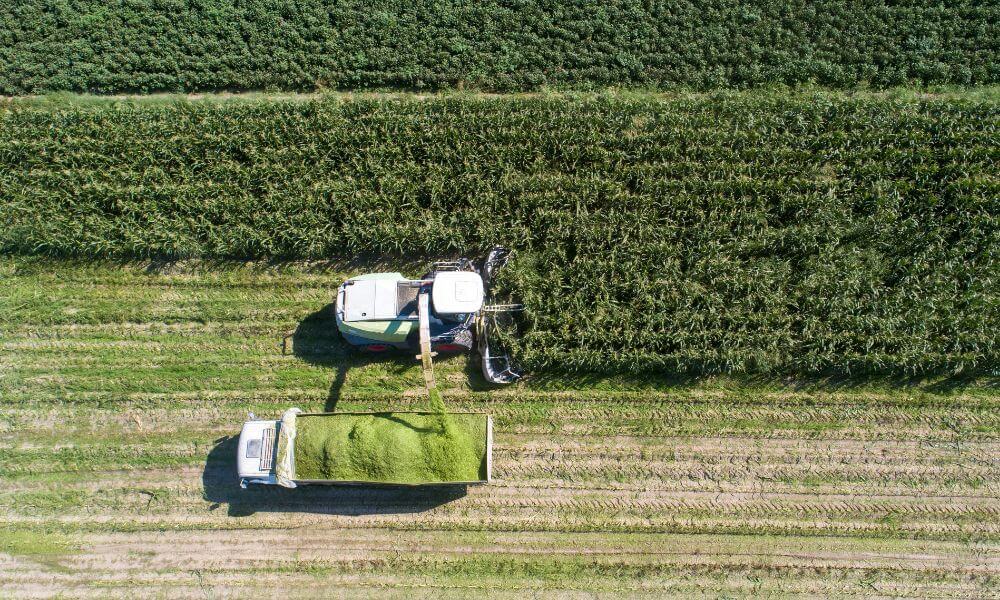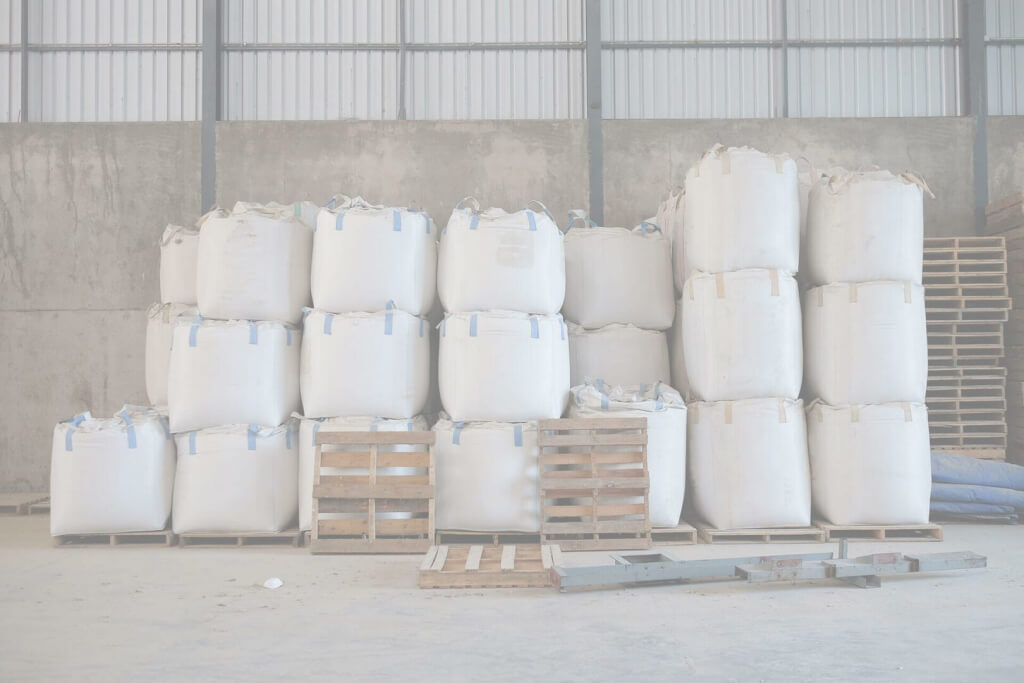The word “silage” comes from “ensilage,” meaning to store in a straw-lined pit. Whether you’re a dairy farmer with hundreds of cows or a backyard hobbyist with just a few, high-quality silage is essential to the health and productivity of your animals.
Use these tips on how to store and harvest high-quality silage. This information can help ensure that your animals have the nutrients they need to stay healthy and productive.
What Is Silage?
Silage is green, succulent forage that has been chopped and stored in an airtight environment (usually in a plastic-lined bunker or pit).
The fermentation process breaks down the plant’s cell walls during storage, making the nutrients more readily available to animals.
Forage crops used for silage include corn, alfalfa, sorghum, and small grains such as wheat and barley.
The length of storage time will depend on the crop and weather conditions, but most silages can be in storage for six to 12 months.
Best Use Cases for Silage
Dairy cows and beef cattle are the primary users of silage, but silage can also work for sheep, goats, pigs, and rabbits.
Silage is a highly nutritious feed that provides animals with the energy and protein they need to grow and produce milk.
When properly stored, silage can be a valuable tool for farmers and hobbyists alike.
How To Harvest High-Quality Silage
The quality of your silage will largely depend on the method of harvesting. Forage crops should be cut at the right stage of growth and maturity to ensure optimal nutrition. Corn, for example, should be harvested when the kernels are in the milk stage of development.
The cut of the crop should also be at a uniform height to ensure fermentation and storage. Once the cut has happened for the forage crop, it is vital to get it into storage quickly.
This cut will help minimize losses due to spoilage and leaching. The gathering of the forage crops is with a forage harvester, which cuts and chops the produce during harvesting.
The forage can then be blown into a silo using a blower or packed into a silage bag using a loader. Packing silage into a silage bag is often done on smaller farms, requiring less equipment.
How To Store Silage
After harvesting the forage crop, it needs to be stored in an airtight environment to prevent spoilage.
The most common storage method is in a bunker silo, concrete, or metal structure that is either above-ground or partially buried. Bunker silos can be lined with plastic or metal to create an airtight seal.
Forage crops can also be stored in upright silos, though these are less common on farms. Upright silos are concrete, metal, or wood and can be round or square. They are usually taller than bunker silos and have a conical roof.
Silage bags are another option for storage, though they are found most often on smaller farms.
These bags are large, airtight plastic bags filled with forage using a loader. Once the bag is complete, it is sealed and left to ferment.
The quality of your silage will largely depend on how well it is stored. Proper storage is essential to preventing spoilage and maintaining the nutritional value of the forage.
Ensure that your silo or storage bags are clean and debris-free before use. This cleanliness will help prevent mold and bacteria from contaminating your silage. The stored forage should be below 40 degrees Fahrenheit to prevent spoilage.
If you are using a bunker silo, pack the silage tightly to minimize the amount of oxygen entering the storage area. This packing will help prevent mold and bacteria from growing.
If you are using a silo bag, seal the bag tightly to create an airtight environment.
Storing and harvesting high-quality silage is essential to providing your animals with the nutrients to grow and produce milk.
Five Tips for Storing and Harvesting
Harvest Silage at the Right Time
The timing of harvest is critical to ensiling quality forages. Forage maturity, growth stage, and weather conditions all play a role in determining when to harvest. As a general rule, the harvesting of crops should be at their peak nutritional value.
This rule will vary depending on the crop, but for most forages, this is when the crop is in the early flowering stage.
Ensure Proper Cutting Height
Forage crops should be cut at a uniform height to ensure fermentation and storage. The ideal cutting height will vary depending on the crop but is typically between two and four inches.
Pack Silage Into Storage as Quickly as Possible
Once cut, place forage crops immediately into storage to minimize oxygen exposure and prevent spoilage. Load the forage onto a wagon and drive it into the silo for minor operations.
A forage harvester works best to chop and pack the forage into the storage unit in a single pass for more extensive operations.
Cover Silage Storage Properly
Once silage is in the storage, it must be covered with an airtight seal to prevent oxygen from spoiling the forage. The most common type of cover used is a tarp, which works best when appropriately secured around the perimeter of the storage unit.
A more permanent cover, such as an inflatable dome, may be used for larger operations.
Monitor Silage Storage Regularly
Monitor the silage storage regularly to ensure that the forage remains fresh and free of spoilage. Checking the silage temperature should be done weekly, and the pH should be monthly.
With these five tips, you can ensure that your silage is the highest quality. By harvesting at the right time, cutting at the proper height, and packing and covering your silage quickly and correctly, you can create a product that will be nutritious and safe for your livestock.
Other Filling and Packing Equipment Needed for High-Quality Silage
Aside from the basics of a forage harvester, there are a few other pieces of equipment that you will need to ensure high-quality silage.
Pick-up Reel
A pick-up reel is necessary to distribute the forage as it is evenly cut. It helps create a consistent windrow to feed into the forage harvester.
Windrow Merger
A windrow merger combines two or more windrows into a single, wider windrow. This merger is helpful when cutting large fields or working with multiple, small fields.
Forage Blower
A forage blower works best to blow the forage into the storage unit. It is crucial to have a forage blower that is powerful enough to move the forage without damaging it.
With the proper equipment and attention to detail, you can create high-quality silage to provide your livestock with a nutritious and safe feed source.
If you need to store and harvest high-quality silage, this information can help. Following these tips and using the right equipment will allow you to create a nutritious and safe product for your livestock.
Once you harvest the silage, you’ll need a silage bag to store it. S&K Packaging offers a variety of high-quality silage bags perfect for storing and transporting your silage. Visit our website to learn more about our products and how we can help you achieve the best results.



